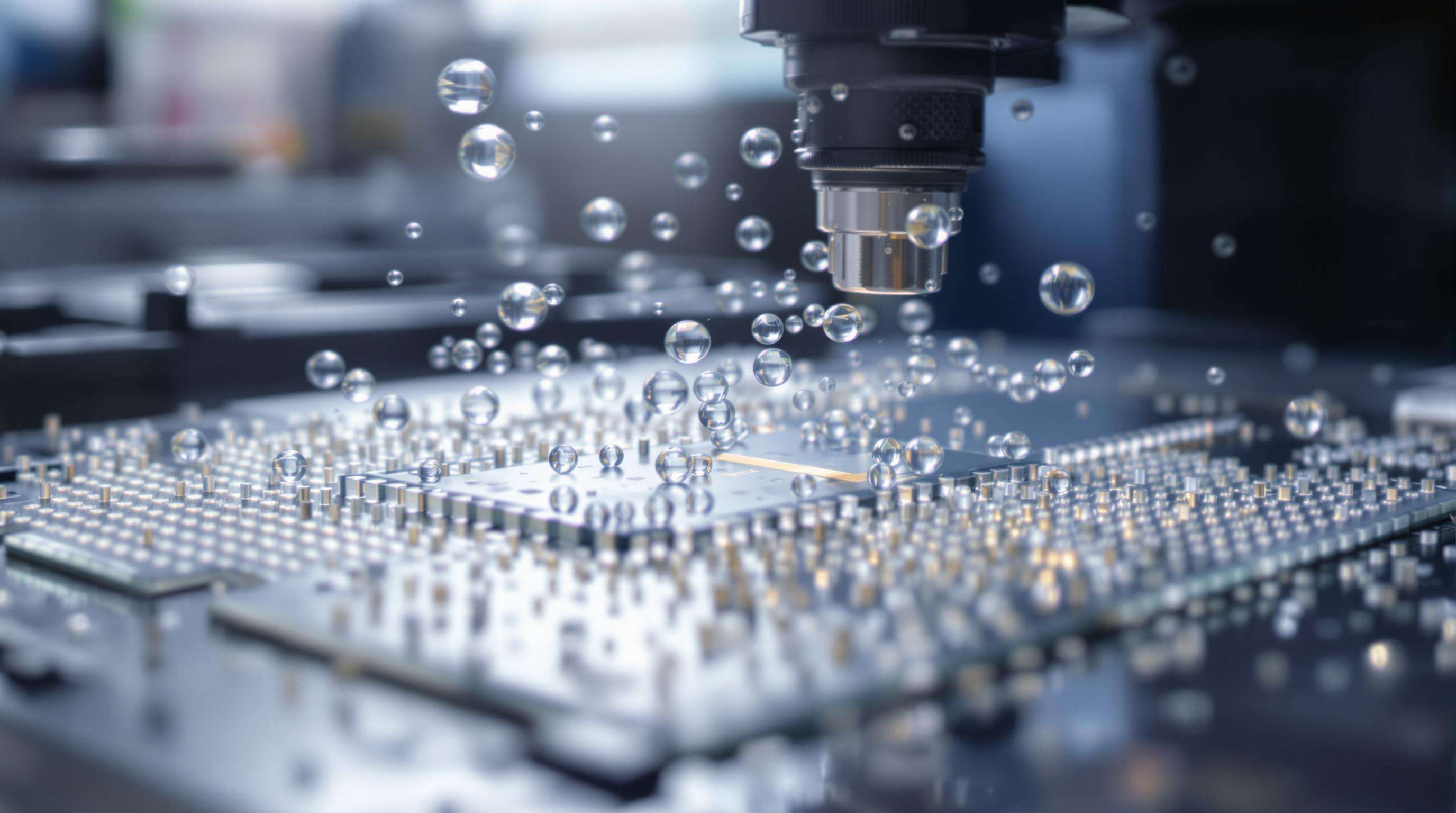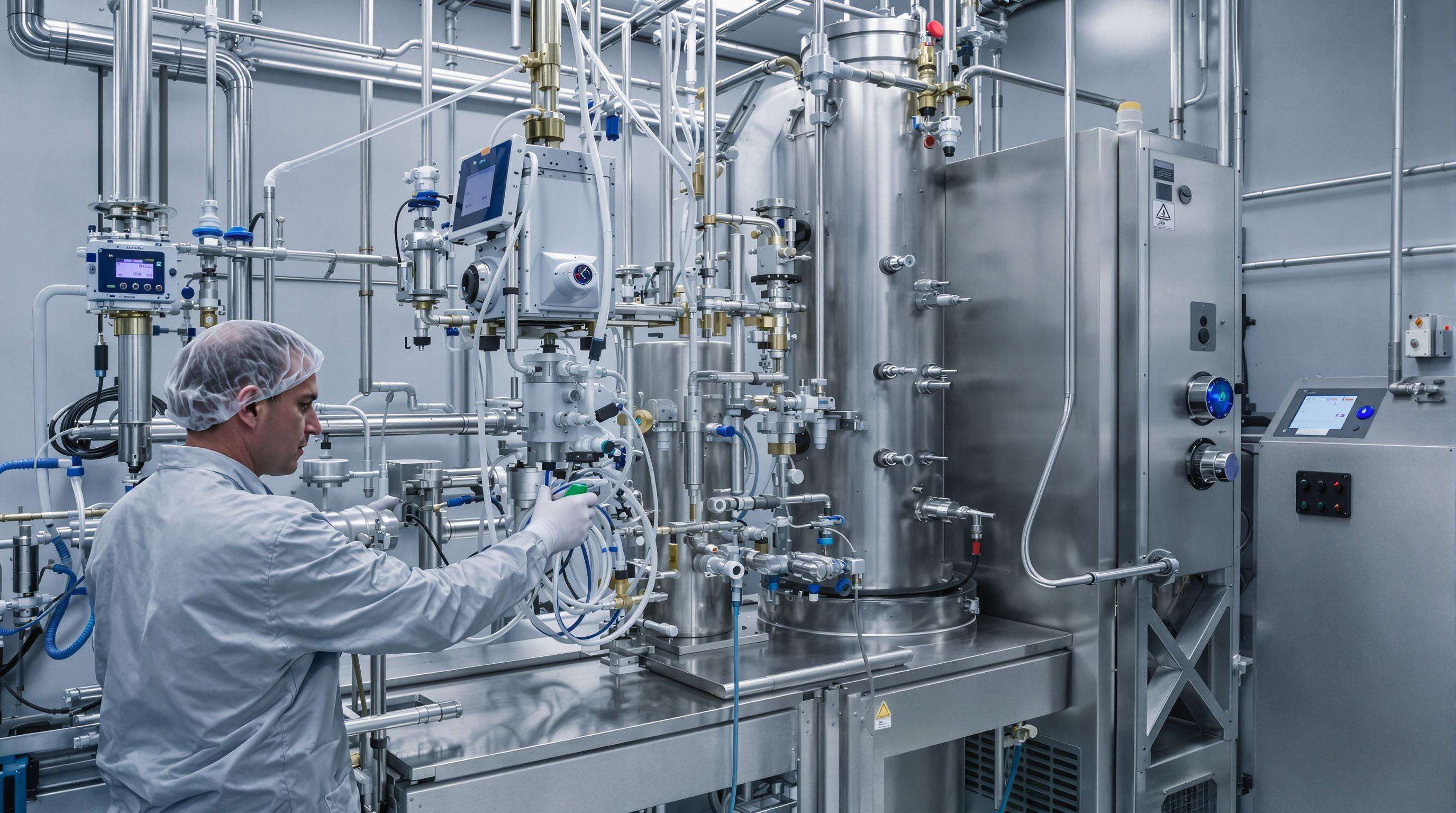Како генератор пара високе чистоће смањује ризик од контаминације
Кључна улога генератора пара високе чистоће у напредним фабрикама полупроводника
Повећана осетљивост на нечистоће у 2nm и 3nm чворовима полупроводника
Kada se dođe do onih minijaturnih čvorišta od 2 nm i 3 nm, proizvodnje poluprovodnika nailaze na ozbiljan problem kontaminacije. Samo jedan molekul ugljovodonika na svakih 10^12 čestica pare je dovoljan da uništi uređaj. Nekada, kada su čvorišta bila veća od 7 nm, proizvođači su mogli da tolerišu nečistoće u nivou delova na milijardu. Međutim, sada sa proizvodnjom na 3 nm, potrebna je čistoća na nivou delova na bilion. To je otprilike hiljadu puta veća čistoća nego ranije. Zašto su zahtevi tako strogi? Pa, pogledajte današnje tranzistorke koje imaju debljinu samo oko 12 do 15 silicijumovih atoma. Čak i najmanje nečistoće na nivou angströma poremete kvantno tuneliranje i oštete integritet oksidnih slojeva tranzistora, što u konačnici znači da uređaji ne rade kako treba.
Kako generator pare visoke čistoće obezbeđuje čistoću na nivou molekula
Generatori pare visoke čistoće danas dostižu neverovatne nivoe čistoće na molekularnom nivou zahvaljujući procesima trostruke destilacije i tim naprednim filterima za ekstremno niske čestice koje funkcionišu do 0,001 mikrona. Sistemi praktično uklanjaju skoro sve štetne materije – govorimo o uklanjanju preko 99,9999% jona, organskih jedinjenja, metala i sličnih materija. Ovo je izuzetno važno kada para dolazi u kontakt sa osetljivim materijalima poput fotootpornih premaza ili silicijumskih pločica tokom procesa proizvodnje. Neki od novijih naprednih sistema dolaze i sa ugrađenim sistemima za praćenje u realnom vremenu, koji koriste tehnologiju masene spektrometrije, kako bi nivo nečistoća ostao ispod 5 delova na trilion. To ima smisla, s obzirom da ove mašine moraju da zadovolje standarde pametne proizvodnje Industrije 4.0 o kojima se stalno priča danas.
Studija slučaja: Uvođenje u fabrici čvora od 3nm
Један од водећих произвођача чипова забележио је изузетно смањење недостатака на полупроводничким плочама када су уградили ове генераторе пара високе чистоће у процесе оксидације и жарења. Највећу разлику учинио је систем са затвореном контуром који је одржавао електропроводљивост пара на нивоу од 0,055 микросименса по центиметру. То је заправо половина оне коју су постизали претходни системи. Као резултат тога, добијен је значајан раст приноса од 12% током израде 3nm FinFET транзистора. Након пуног покретања процеса, број честица износио је само 0,2 честице по милилитру, једнаке или веће од 0,1 микрометра. Ова перформанса надмашила је SEMI F57 стандарде неопходне за ове напредне технолошке процесе, што показује колико се унапредила контрола квалитета.
Интеграција са праћењем чистоће у реалном времену на тачки употребе (POU)
Savremeni generatori pare sada dolaze sa senzorima ugrađenim direktno u svaku tačku upotrebe, koji šalju kontinuirane tokove podataka centralnim sistemima za održavanje. Ovakve konfiguracije smanjuju vreme nedostupnosti izazvane problemima kontaminacije za oko 25–30% tokom ranih testova, jer otkrivaju kada filteri počinju da se troše više od dva dana pre stvarnog kvara. Kada se ovo poveže sa pametnim AI sistemima za praćenje neobičnih obrazaca, ceo sistem uspeva da ostane u funkciji skoro neprekidno, sa izuzetnom dostupnošću od 99,9996%. To je izuzetno važno za fabrike poluprovodnika koje godišnje vrede milijarde dolara, jer gubitak samo jednog sata proizvodnje košta više od 740.000 dolara, prema nedavnim studijama Ponemon instituta iz 2023. godine.
Uticaj kontaminacije na prinos i ekonomiku proizvodnje poluprovodnika
Kako čestice i molekularne nečistoće smanjuju prinos u nanoskalnim čvorovima
Kada se dođe do tih 2nm i 3nm tehnoloških procesa, karakteristike postaju toliko male da su u suštini samo 15 do 20 atoma u prečniku, što ih čini izuzetno osetljivim na svaku vrstu kontaminacije. Sitne čestice veličine oko 2nm zapravo mogu poremetiti EUV litografske šare tokom proizvodnje. Tu je i problem sa molekularnim zagađivačima poput molekula kiseonika ili ostataka ugljovodonika koji na kraju uništavaju slojeve oksida kapije. Istraživanja koja su sproveli naučnici u vezi sa standardima čistoće gasova takođe pokazuju nešto prilično uznemirujuće. Ako nivo vazdušno prenošenih molekulskih baza (AMB) pređe 0,1 delova na milijardu, fabrike koje proizvode napredne logičke čipove imaju padove prinosa za oko 12%. Zbog ove ekstremne osetljivosti, čistim sobama potrebno je da održavaju uslove bolje od ISO Class 1 standarda u određenim oblastima. Verujte ili ne, čak i kada radnici normalno dišu unutar ovih prostorija, u njihovom izdahu se nalazi dovoljno zagađivača koji mogu potencijalno oštetiti delikatne procese izrade koji se tamo odvijaju.
Економски трошак недостатака у масовној производњи полупроводника
Финансијски губици услед контаминације постају изузетно значајни када се ради о великој серијској производњи. Узмимо на пример фабрику која обрађује око 100.000 плочица месечно. Ако им се принос смањи само за 1%, годишњи губици могу достићи скоро 58 милиона долара. А ово још увек не узима у обзир чињеницу да свака модерна плочица данас кошта више од 30.000 долара. Индустрија полупроводника планира изградњу 18 нових фабрика до 2025. године, тако да контрола контаминације није само питање штедње средстава сада, већ утиче на целу глобалну тржишну вредност од 740 милијарди долара сваке године. Уградња генератора високо чисте паре тачно тамо где су потребни на локацији смањује потребу за поправкама недовољно квалитетних производака за око трећину. То јасно показује произвођачима зашто је разумно улагати у решења за чистоћу ради заштите профита у овако скупима производним процесима.
Изазови у одржавању чистоће на скали фабрикације испод 3 нм
Експоненцијални пораст осетљивости на недостаци услед скалирања чворова

На под-3nm чворовима, осетљивост на недостатке расте експоненцијално — једна честица од 0.5nm може онеспособити 4% функционалности чипа, према Извештају о чистоћи полупроводника из 2024. године. Линије производње сада имају:
- 400% веће стопе недостатака услед честица у поређењу са 5nm процесима
- 18% губитка плоча везаног за молекуларне нечистоће у процесним гасовима
- Корелација између флуктуација нечистоћа од ±0.1 ppb и варијације приноса од 0.8%
Оваква средина захтева чистоћу паре испод 0.1 ppt за кључне оксидационе кораке — што је постижљиво само напредним генераторима паре високе чистоће.
Ограничења традиционалне филтрације: Да ли могу задовољити будуће захтеве чистоће?
Традиционална филтрација гасова не испуњава захтеве у три кључне области за под-3nm производњу:
| Parametar | Starosedijski sistemi | Потребна спецификација | Недостатак капацитета |
|---|---|---|---|
| Филтрација честица | µ0,003 µm | <0,0015 µm | 50% |
| Уклањање угљоводоника | 98.7% | 99.9999% | 1,29% |
| Контрола влаге | ±5 ppb | ±0,3 ppb | 16,6x варијанса |
Nedavne analize industrije pokazuju da 72% fabrika 3nm tehnologije beleže onečišćenje parom koja premašuje preporučene granice koje je odredila ASML tokom brzog termalnog procesa. Ovi nedostaci zahtevaju rekonstrukciju isporuke gasova na molekularnom nivou — upravo ono što moderne generatore visokoperna pare rešavaju kroz pročišćavanje na mestu upotrebe i praćenje nivoa onečišćenja u stvarnom vremenu.
Napredna detekcija nečistoća omogućena generatorom visokoperna pare i analizom gasova

Postizanje nivoa detekcije onečišćenja u delovima na trilion (ppt)
Zahtevi za detekcijom u modernim fabriciranim objektima porasli su oko 1000 puta u poređenju sa starijim sistemima, jer čak i kontaminanti na nivou pojedinačnih molekula mogu izazvati ozbiljne probleme. Kada se masena spektrometrija sa jonizacijom pri atmosferskom pritisku kombinuje sa generatorima visokoprostog pare, dostiže se nivo detekcije od delova na trilion, što je za oko 60% bolje u odnosu na tradicionalne sisteme koji rade na nivou delova na milijardu. Za proizvodnju poluprovodnika na 2nm i 3nm čvorovima, ovakva osetljivost ima veliki značaj. Industrijski podaci iz prošle godine pokazuju nešto zaista upečatljivo: nivoi kontaminacije niski kao 5 ppt kiseonika ili ugljovodonika mogu smanjiti iskorišćenje proizvodnje između 12% i 18% širom sektora.
| Metod detekcije | Osjetljivost | Primeni na 3nm čvorovima |
|---|---|---|
| Tradicionalni GC-MS | 50 ppb | Zastarelo za procese na početku |
| API-MS + Parna | 0,5 ppt | Kritično za komore litografije sa ekstremnim ultraljubičastim zračenjem |
Sinerzija između sistema čistoće pare i alata za analizu višekomponentnih gasova
Комбиновање производње ултрапуре паре са инстант мониторингом гасова омогућава бољу контролу загађујућих материја у фабрикама. На пример, када анализатори гасова детектују свега 2,7 делова на трилион летљивих органских једињења, системи за пречишћавање паре готово одмах коригују параметре третмана воде. Коначан резултат? Фабрике за полупроводнике које обрађују 300мм плочице имају смањење проблема са честицама за око 70% према недавним извештајима о процесима из 2023. године. Ове фабрике такође одржавају температуру стабилном у оквиру мање од 0,1 степени Целзијуса, што је критично за оне фино атомски слојеве који се користе у производњи чипова. Већина водећих произвођача полупроводника је започела са захтевима овакве интеграције система као део својих стандарда ISO Class 1 чистих просторија.
Често постављана питања
Зашто су генератори високочисте паре кључни у фабрикама полупроводника?
Генератори пара високе чистоће су есенцијални у производњи полупроводника јер обезбеђују екстремну чистоћу на молекулском нивоу, што је критично за минијатурне процесне чворове од 2nm и 3nm. Ова чистоћа спречава недостатке и побољшава приносе тако што избегава контаминацију која може озбиљно утицати на функционалност уређаја.
Како раде генератори пара високе чистоће?
Ови генератори користе напредне методе пречишћавања, као што су трострука дестилација и ултра-низак филтер за честице, како би уклонили нечистоће, укључујући јоне, органе и метала. Такође користе технологије за праћење у реалном времену како би се осигурало да ниво нечистоћа остане екстремно низак, испуњавајући строга производна стандарда.
Које економске предности носе генератори пара високе чистоће у производњи полупроводника?
Генератори пара високе чистоће помажу у смањењу недостатака, чиме се повећава принос. Ова побољшања могу уштедети милионе долара за произвођачке фабрике одржавајући високу ефикасност производње и смањујући потребу за поправкама недовољно квалитетних производа.
Који су изазови загађења у изради чипова мањих од 3 нм?
Чипови мањи од 3 нм изузетно су осетљиви на недостатке услед своје мале величине. Чак и један молекул нечистоће може узроковати оштећење функционалности, чиме се захтевају напредни системи за откривање нечистоћа и пречишћавање ради одржавања интегритета рада и приноса.

 EN
EN







































